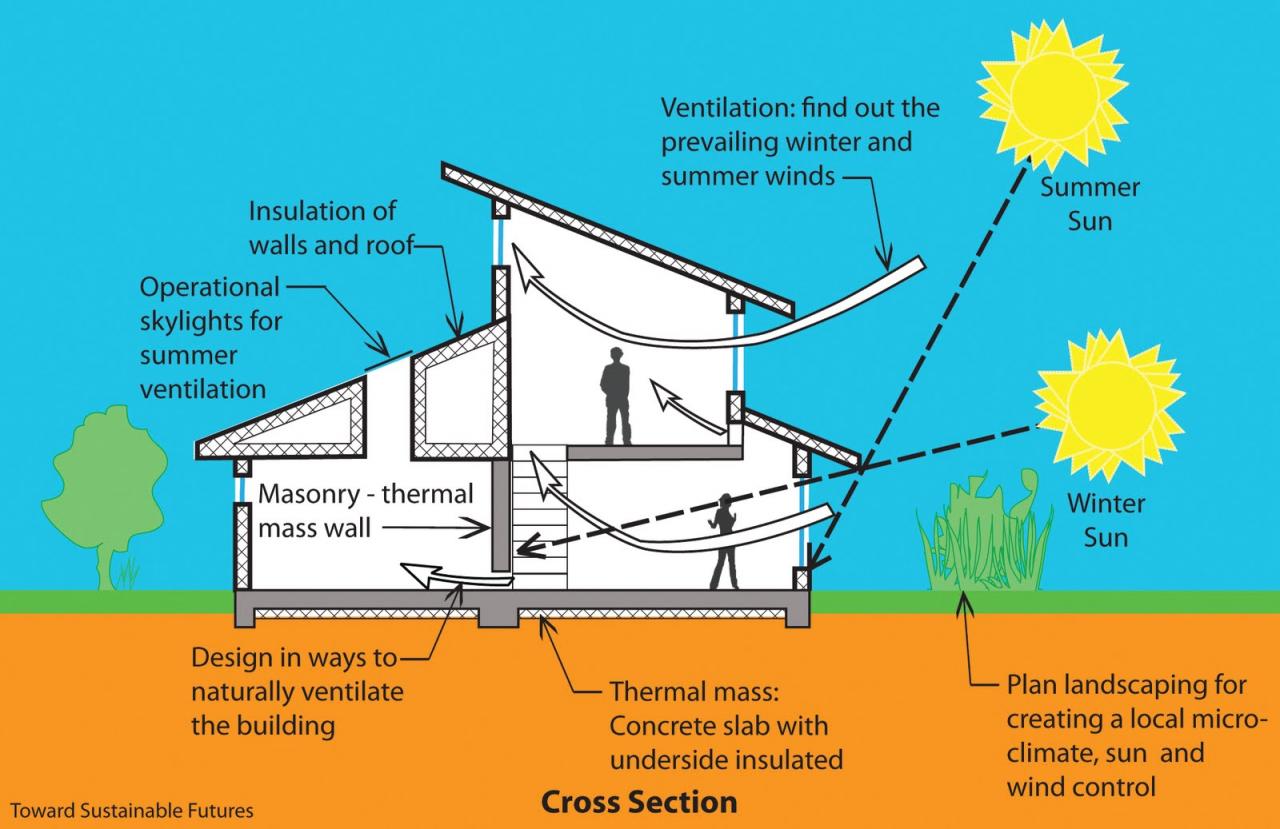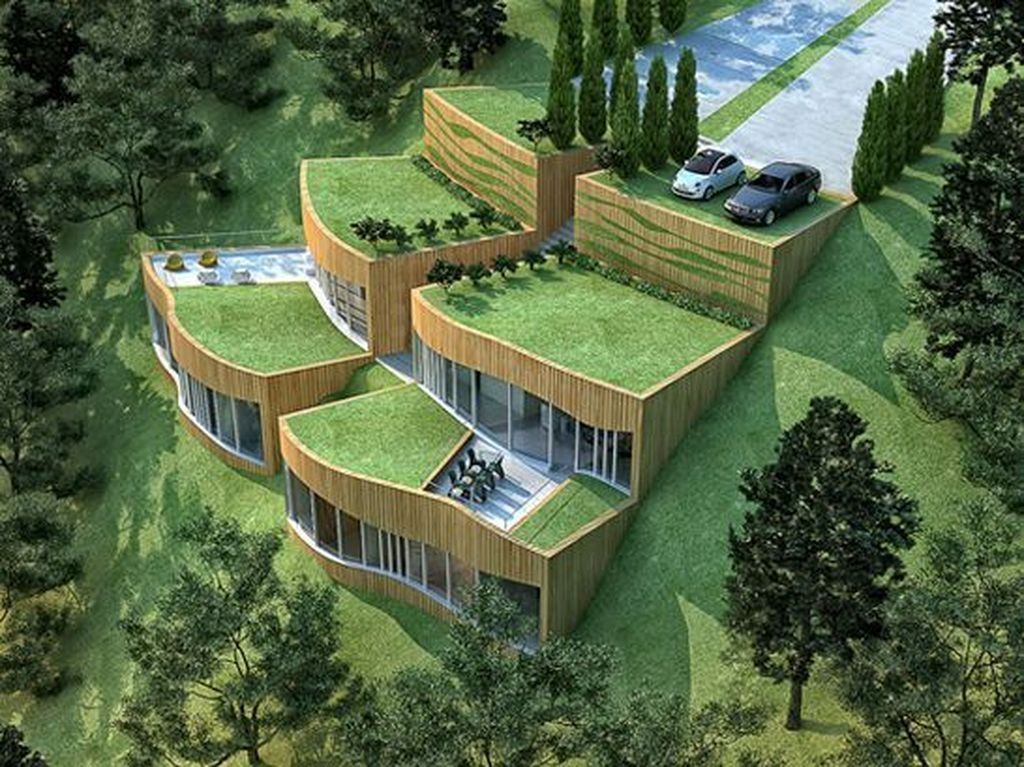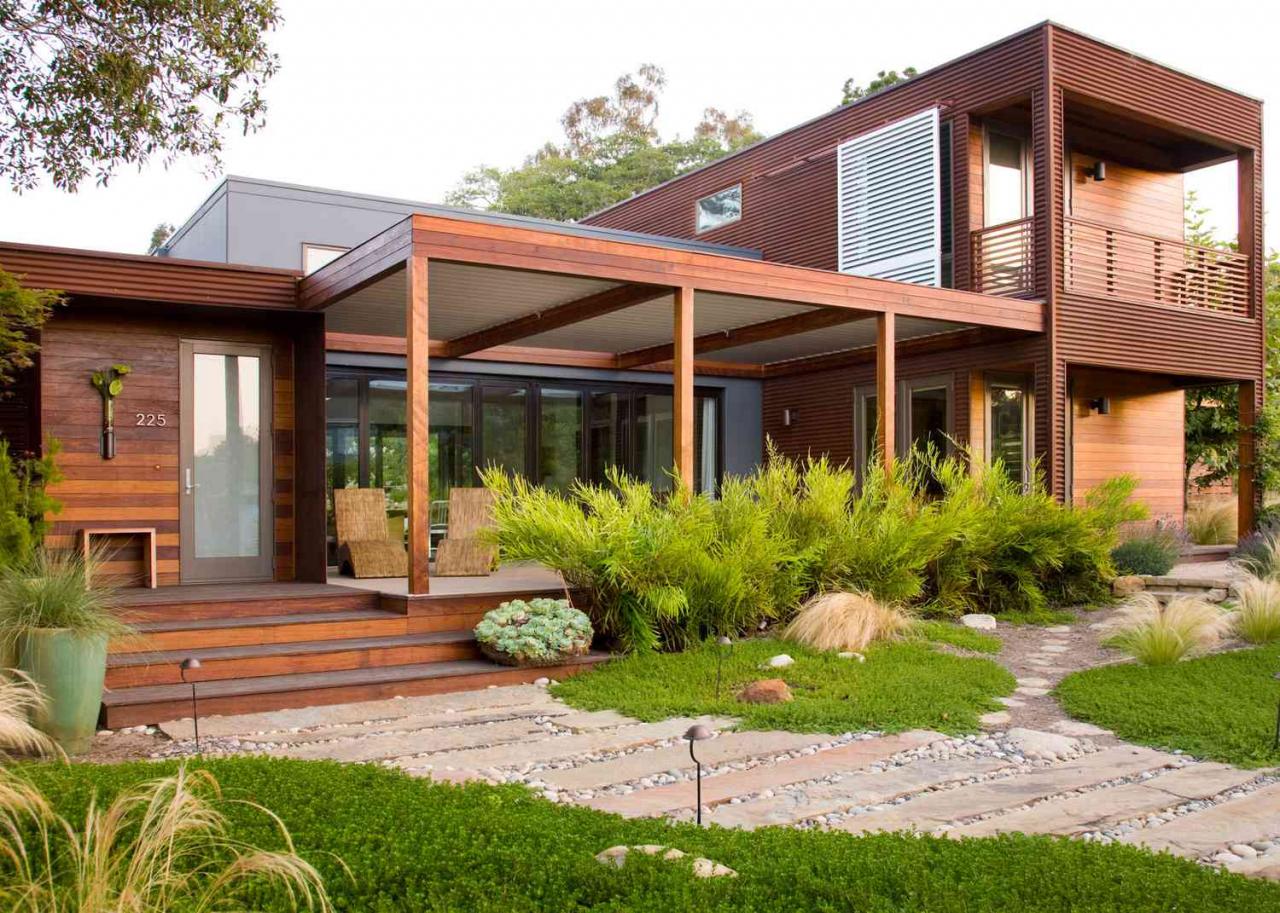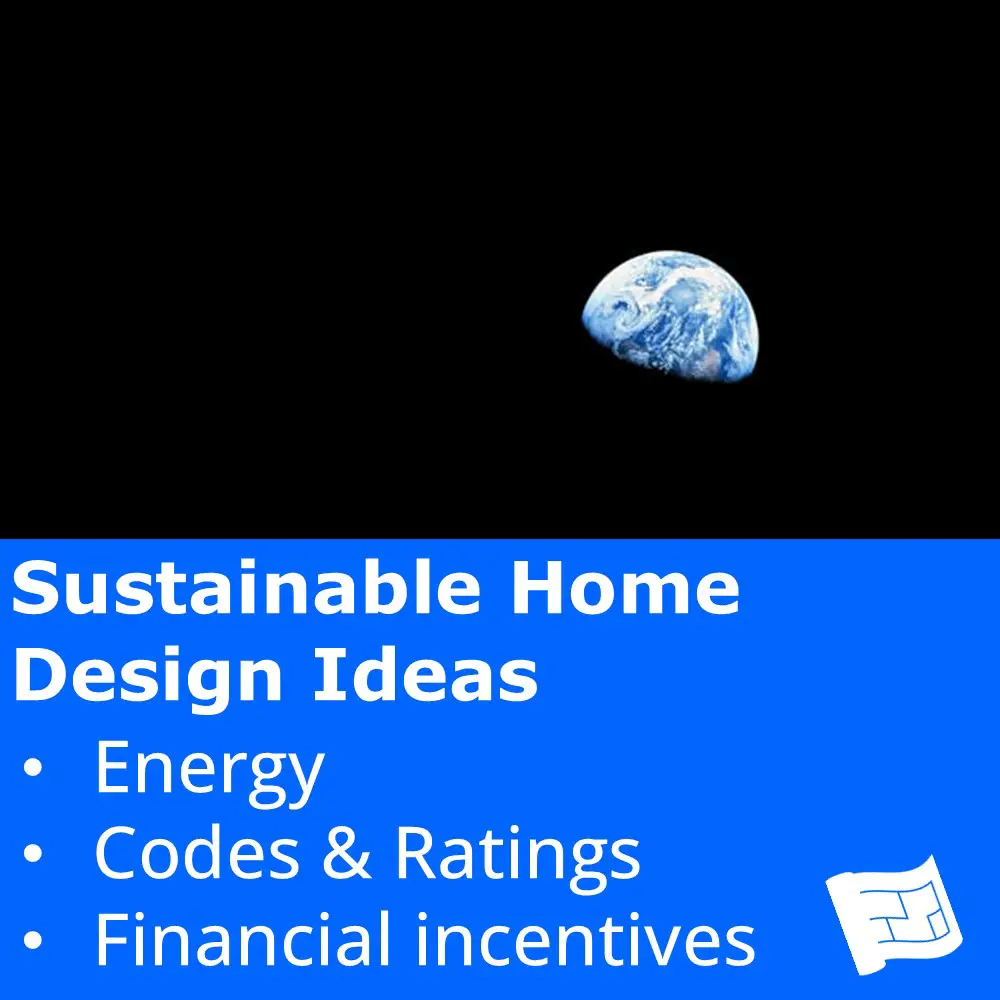How to design a modern home with sustainable materials? It’s more than just a trend; it’s a necessity for a greener future. This guide dives deep into creating stylish, contemporary living spaces while minimizing your environmental footprint. We’ll explore everything from sourcing eco-friendly materials and understanding their lifecycle impacts to implementing sustainable design principles across all aspects of your home, from foundation to interior decor.
Get ready to build your dream home—responsibly.
We’ll cover the key characteristics of modern design and how sustainable materials can achieve that aesthetic. We’ll compare traditional and sustainable building materials, analyzing their environmental impact and cost-effectiveness. You’ll learn how to select the right materials for your project, considering factors like climate, budget, and design preferences. We’ll also showcase real-world examples of stunning sustainable modern homes, inspiring you to create your own eco-friendly masterpiece.
Defining Modern Design in Sustainable Building

Modern sustainable homes seamlessly blend aesthetic appeal with environmental responsibility. This isn’t about sacrificing style for eco-consciousness; instead, it’s about reimagining how we build, using innovative materials and design principles to create beautiful, energy-efficient, and environmentally friendly living spaces. The result is a home that’s both stylish and sustainable, reflecting a commitment to a healthier planet and a more comfortable lifestyle.
Key Characteristics of Modern Home Design
Modern home design is characterized by clean lines, open floor plans, large windows, and a connection to the outdoors. These features prioritize natural light and ventilation, minimizing the need for artificial lighting and heating/cooling. The use of sustainable materials directly supports these characteristics, enhancing their environmental benefits and reducing the overall carbon footprint of the building. For instance, large windows made from reclaimed wood or high-performance glass can maximize natural light while minimizing energy loss.
Open floor plans allow for better air circulation, reducing reliance on mechanical ventilation systems.
Designing a modern home with sustainable materials involves careful material selection, prioritizing reclaimed wood and bamboo. This eco-conscious approach can beautifully complement styles like a modern classic home design with farmhouse elements , where natural textures and reclaimed materials are often key features. Ultimately, blending sustainability with your chosen aesthetic creates a home that’s both stylish and environmentally responsible.
Achieving Modern Design with Sustainable Materials
Sustainable materials play a crucial role in achieving the hallmarks of modern design while minimizing environmental impact. For example, using reclaimed wood for flooring or structural elements not only provides a unique aesthetic but also reduces the demand for newly harvested timber. Bamboo, a rapidly renewable resource, can be used for flooring, decking, or even structural components, offering a strong and visually appealing alternative to traditional hardwoods.
Similarly, rammed earth walls, a technique that uses locally sourced soil, offer excellent thermal mass, reducing the need for heating and cooling. These materials allow for the creation of visually stunning modern spaces while actively contributing to environmental sustainability.
Examples of Modern Architectural Styles Prioritizing Sustainability
Several modern architectural styles exemplify the integration of sustainability and aesthetics. Passive solar design, for example, strategically positions windows and other building elements to maximize solar heat gain in winter and minimize it in summer. This reduces reliance on heating and cooling systems. Green roofs, covered with vegetation, provide insulation, reduce stormwater runoff, and improve air quality.
Prefabricated modular homes offer a sustainable construction method, minimizing waste and construction time. These examples demonstrate that modern sustainable architecture isn’t limited to a single style; it’s a design philosophy adaptable to various architectural expressions.
Comparison of Traditional and Sustainable Building Materials
The following table compares traditional building materials with their sustainable alternatives, considering environmental impact, cost, and durability. Note that the environmental impact score is a subjective assessment based on various factors including material sourcing, manufacturing processes, and end-of-life management. Costs can vary significantly depending on location and availability.
Designing a modern home with sustainable materials involves careful material selection, prioritizing recycled and renewable resources. For inspiration on achieving a timeless aesthetic while staying eco-conscious, check out this guide on classic modern home design featuring sustainable materials which showcases how to blend style and sustainability. Ultimately, creating a sustainable modern home is about thoughtful choices that minimize environmental impact without sacrificing design.
| Material Name | Environmental Impact Score (1-10) | Cost (Relative) | Durability |
|---|---|---|---|
| Concrete | 7 | Medium | High |
| Rammed Earth | 3 | Low | High |
| Hardwood Lumber | 6 | High | High |
| Reclaimed Wood | 2 | Medium | High |
| Steel | 8 | High | High |
| Bamboo | 2 | Low | Medium |
| Gypsum Board (Drywall) | 5 | Low | Medium |
| Hempcrete | 3 | Medium | Medium |
Sourcing and Selecting Sustainable Materials: How To Design A Modern Home With Sustainable Materials

Building a modern, sustainable home requires careful consideration of the materials used. The choices you make will significantly impact the building’s environmental footprint, its durability, and its overall cost. Understanding the availability, lifecycle, and performance of various sustainable options is crucial for informed decision-making.
Material Availability and Cost-Effectiveness
The availability and cost of sustainable building materials vary considerably depending on geographic location. For example, bamboo, a rapidly renewable resource, is readily available and relatively inexpensive in regions like Southeast Asia, but its cost and accessibility increase significantly in other parts of the world due to transportation costs and import tariffs. Similarly, reclaimed wood, a popular choice for its aesthetic appeal and environmental benefits, is more readily available and potentially less expensive in areas with a robust demolition and salvage industry.
Conversely, materials like hempcrete, while environmentally friendly, may have limited availability and higher initial costs due to its relatively nascent market presence in many regions. Regional variations in labor costs also affect the overall cost-effectiveness of using specific sustainable materials. For instance, the cost of constructing a hempcrete wall might be higher in regions with a shortage of skilled labor compared to areas where this type of construction is more common.
Lifecycle Assessment of Sustainable Materials
A comprehensive lifecycle assessment (LCA) is essential for evaluating the true environmental impact of a building material. This assessment considers all stages of a material’s life, from raw material extraction and processing to transportation, construction, use, maintenance, and finally, disposal or recycling. For instance, the LCA of bamboo might reveal a relatively low carbon footprint due to its rapid growth and low energy requirements for processing.
However, the transportation distance from the source to the construction site could significantly impact its overall environmental performance. Reclaimed wood, while minimizing the need for new timber harvesting, still involves transportation and potential processing (like cleaning and treatment) that add to its carbon footprint. The LCA of hempcrete would highlight its low embodied energy compared to concrete, owing to its use of locally sourced materials and minimal energy-intensive processing.
This thorough assessment allows for a comparative evaluation, enabling informed choices based on the total environmental impact of each material.
Performance Characteristics of Sustainable Materials
Different sustainable materials exhibit varying performance characteristics. Bamboo, known for its high strength-to-weight ratio, can be used in structural applications, although its susceptibility to moisture requires proper treatment. Reclaimed wood, while possessing good strength and aesthetic appeal, might require careful inspection to ensure structural integrity and resistance to decay. Hempcrete, a composite material made from hemp fibers and lime, offers excellent thermal insulation properties but exhibits lower compressive strength compared to traditional concrete, requiring careful structural design.
The choice of material depends on the specific requirements of the project. For example, bamboo might be suitable for framing in a warm, dry climate, while hempcrete would be more appropriate for walls in a climate requiring superior insulation.
Selecting Appropriate Sustainable Materials: A Flowchart
The selection of appropriate sustainable materials involves a systematic process. A flowchart could visually represent this process, starting with defining project requirements (climate, budget, aesthetic preferences, etc.). This would be followed by identifying potential sustainable materials based on these requirements. Next, a detailed LCA of the shortlisted materials would be conducted. Finally, the material with the optimal balance of performance, cost, and environmental impact would be selected.
This process ensures that the chosen materials meet the project’s specific needs while minimizing environmental impact. The flowchart would then branch out to consider material sourcing, transportation, and waste management strategies. This iterative process ensures that the final material selection aligns perfectly with the overall sustainable design goals.
Sustainable Design Principles for Different Home Aspects
Building a modern home with sustainability at its core requires careful consideration of every aspect, from the foundation to the finishing touches. This involves choosing eco-friendly materials and implementing design strategies that minimize environmental impact while maximizing efficiency and comfort. Let’s delve into the specifics of sustainable design principles applied to various parts of your home.
Sustainable Foundation and Structural Elements
The foundation and structural elements of a home form its backbone, significantly impacting its longevity and environmental footprint. Sustainable options prioritize durability, minimizing embodied carbon (the carbon emissions associated with the manufacturing and transportation of materials), and resource efficiency. For foundations, consider using locally sourced materials like rammed earth or recycled concrete aggregates to reduce transportation emissions. For the structural frame, timber from sustainably managed forests offers a renewable and carbon-sequestering alternative to steel or concrete.
Engineered wood products, such as cross-laminated timber (CLT), provide high strength and dimensional stability, while minimizing material waste. Employing techniques like prefabrication can also reduce on-site waste and construction time.
Sustainable Wall, Roof, and Window Systems
Walls, roofs, and windows play a crucial role in a home’s energy performance. Sustainable design prioritizes thermal mass and insulation to minimize energy consumption for heating and cooling. Walls can incorporate materials like straw bales, hempcrete, or insulated concrete forms (ICFs), which offer excellent insulation properties and are often made from renewable or recycled resources. For roofing, consider using recycled metal, vegetated roofs (green roofs) to improve insulation and reduce stormwater runoff, or locally sourced wood shingles from sustainably managed forests.
High-performance windows with low-E coatings and triple glazing significantly reduce heat transfer, minimizing energy loss in winter and heat gain in summer.
Sustainable Plumbing and HVAC Systems
Efficient plumbing and HVAC systems are essential for reducing water and energy consumption. Low-flow fixtures (toilets, showerheads, faucets) significantly reduce water usage without compromising functionality. Greywater recycling systems can reuse water from showers and sinks for irrigation, further minimizing water demand. For HVAC, consider heat pumps, which are significantly more energy-efficient than traditional systems, and can provide both heating and cooling.
Proper insulation and airtight construction are crucial for maximizing the efficiency of these systems. Passive solar design strategies, such as strategically placed windows to maximize natural light and heat gain in winter, can further reduce reliance on mechanical systems.
Minimizing Waste and Maximizing Resource Efficiency During Construction
Careful planning and material selection are key to minimizing waste and maximizing resource efficiency during construction.
- Precise Material Ordering: Accurate calculations and detailed planning minimize material waste by ordering only the necessary quantities.
- Prefabrication: Off-site fabrication of components reduces on-site waste and improves construction efficiency.
- Material Reuse and Recycling: Incorporating reclaimed or recycled materials, such as salvaged timber or recycled steel, reduces the demand for new resources.
- Waste Management Plan: Implementing a comprehensive waste management plan that separates and recycles construction debris minimizes landfill waste.
- Modular Design: Designing with modular components allows for easier adaptation and potential reuse of materials in the future.
Interior Design with Sustainable Materials

Creating a modern home that’s both stylish and environmentally responsible requires careful consideration of interior design choices. Sustainable materials not only reduce your environmental footprint but also contribute to a healthier and more comfortable living space. By prioritizing eco-friendly options, you can build a home that reflects your values and lasts for generations.
Sustainable Flooring Options
Choosing sustainable flooring is crucial for minimizing environmental impact and enhancing indoor air quality. Many excellent alternatives exist to traditional materials like hardwood from unsustainable sources. Consider bamboo, a rapidly renewable resource known for its strength and durability. Cork flooring, another sustainable option, is naturally insulating and comfortable underfoot. Recycled rubber flooring, often made from recycled tires, provides a durable and resilient surface, perfect for high-traffic areas.
Finally, linoleum, a material made from natural ingredients like linseed oil and cork, offers a classic and sustainable choice.
Sustainable Wall Coverings
Sustainable wall coverings offer a diverse range of textures and aesthetics while minimizing environmental impact. Consider using reclaimed wood for a rustic and unique look. The repurposed wood adds character and reduces waste. Natural paints and plasters, free from harmful VOCs, offer a healthier alternative to conventional wall coverings. Bamboo wallpaper provides a visually appealing and sustainable option, reflecting a modern aesthetic.
Finally, recycled fabric wall coverings offer a unique and sustainable option for adding texture and personality to a room.
Sustainable Furniture Choices
Selecting furniture made from sustainably sourced wood, such as FSC-certified timber, is a crucial step in creating a sustainable interior. This certification ensures that the wood comes from responsibly managed forests. Repurposed or vintage furniture offers a unique charm and reduces the demand for newly manufactured pieces. Bamboo furniture is a rapidly renewable alternative to traditional wood, offering a modern and sustainable choice.
Finally, opting for furniture made from recycled materials like plastic bottles or metal scraps demonstrates a commitment to resource efficiency.
Recycled and Reclaimed Materials in Interior Design, How to design a modern home with sustainable materials
Incorporating recycled and reclaimed materials adds character and sustainability to your interior design. Reclaimed wood beams can be used to create stunning architectural features, while recycled glass can be incorporated into countertops or mosaic tiles. Old pallets can be repurposed into unique shelving units or headboards. Using these materials not only reduces waste but also adds a unique, vintage aesthetic to your home.
Consider a statement piece such as a coffee table crafted from reclaimed wood, showcasing the beauty of reused materials and adding a unique focal point to the living space.
Low-VOC Paints and Finishes
Selecting low-VOC (volatile organic compound) paints and finishes is essential for creating a healthy indoor environment. VOCs can contribute to indoor air pollution, impacting respiratory health. Opting for paints and finishes labeled as low-VOC or zero-VOC ensures a healthier home. These paints often come in a wide range of colors and finishes, allowing for creative design choices without compromising health.
Remember to always check the product labels to verify their VOC content.
Sample Room Layout: A Sustainable Modern Living Room
Imagine a living room with bamboo flooring, providing a warm and durable surface. The walls are adorned with natural plaster, painted with a low-VOC paint in a calming neutral tone. A reclaimed wood coffee table serves as a focal point, showcasing the beauty of repurposed materials. A comfortable sofa, upholstered with organic cotton fabric, sits against a wall accented with recycled fabric wall art.
A large window allows for ample natural light, minimizing the need for artificial lighting. This room design showcases the integration of sustainable materials in a modern and aesthetically pleasing way, reflecting both style and environmental responsibility.
Illustrative Examples of Sustainable Modern Homes

Sustainable modern homes are more than just aesthetically pleasing; they represent a conscious effort to minimize environmental impact while maximizing comfort and functionality. These homes demonstrate that sustainable building practices can result in stunning and innovative designs, proving that eco-consciousness and modern aesthetics are not mutually exclusive. Let’s explore some compelling examples.
Case Study 1: The “Sunstone House,” California
The Sunstone House, located in a sun-drenched region of California, showcases passive solar design principles at their finest. Its south-facing orientation maximizes solar gain during winter, minimizing the need for heating. Overhanging eaves provide shade during the summer months, reducing cooling loads. The home utilizes rammed earth walls, a material with exceptional thermal mass, which absorbs and releases heat slowly, regulating the indoor temperature naturally.
Reclaimed wood is used extensively throughout the interior, reducing the demand for newly harvested timber. The roof is covered with solar panels, providing renewable energy for the home’s electricity needs. The overall design philosophy emphasizes a symbiotic relationship between the building and its environment, minimizing energy consumption and maximizing resource efficiency.
Case Study 2: The “Greenwich Green,” Connecticut
The Greenwich Green home, situated in Connecticut, exemplifies the use of locally sourced materials and innovative construction techniques. The structure primarily utilizes cross-laminated timber (CLT), a highly sustainable and strong engineered wood product manufactured from sustainably harvested timber. CLT panels significantly reduce construction time and waste compared to traditional framing methods. The exterior is clad in sustainably harvested cedar, chosen for its durability and natural beauty.
The home incorporates a rainwater harvesting system, collecting rainwater for non-potable uses such as irrigation and toilet flushing, reducing reliance on municipal water supplies. The design prioritizes natural light and ventilation, minimizing the need for artificial lighting and air conditioning. The overall design emphasizes a low-carbon footprint through material selection and energy efficiency.
Case Study 3: The “Earthship Biotecture,” New Mexico
The Earthship Biotecture homes, found in various locations including New Mexico, represent a radical approach to sustainable building. These homes are partially embedded into the earth, utilizing the earth’s thermal mass for temperature regulation. Recycled materials, such as tires filled with earth, are used extensively in the construction, diverting waste from landfills. Solar panels provide renewable energy, and rainwater harvesting systems collect and filter water for household use.
The homes are designed to be off-grid and self-sufficient, minimizing reliance on external resources. The overall design philosophy is one of radical sustainability, showcasing the potential for homes to be built almost entirely from recycled and natural materials.
Comparative Table of Sustainable Modern Homes
| Project Name | Location | Key Sustainable Materials | Notable Design Features |
|---|---|---|---|
| Sunstone House | California | Rammed earth, reclaimed wood, solar panels | Passive solar design, overhanging eaves, thermal mass |
| Greenwich Green | Connecticut | Cross-laminated timber (CLT), sustainably harvested cedar | Rainwater harvesting, natural light and ventilation |
| Earthship Biotecture | New Mexico | Recycled tires, earth, solar panels | Earth-sheltered design, off-grid functionality |